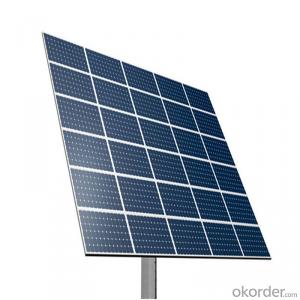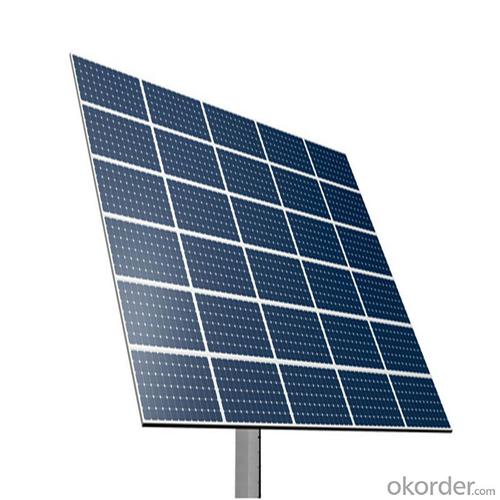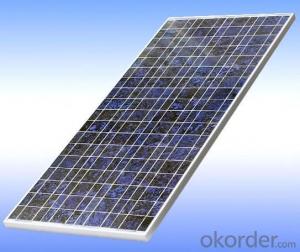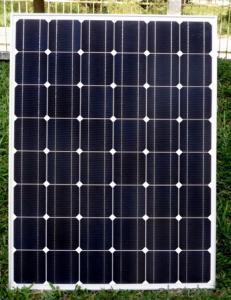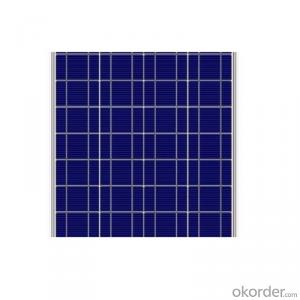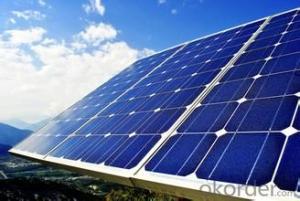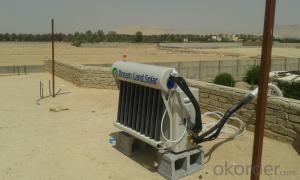Junction Solar Cells 200 Watt Photovoltaic Poly Solar Panel with ISO9001/14001/CE/TUV/UL
- Loading Port:
- China main port
- Payment Terms:
- TT or LC
- Min Order Qty:
- 1000 watt
- Supply Capability:
- 500000 watt/month
OKorder Service Pledge
OKorder Financial Service
You Might Also Like
Specification
Instruction
Quality and Safety
1. Rigorous quality control meets the highest international standards.
2. High-transmissivity low-iron tempered glass, strong aluminium frame.
3. Using UV-resistant silicon.
4. IS09001/14001/CE/TUV/UL
5.3w-300w mono & poly solar panel supply
Warranties
1. 10 years limited product warranty
2. 15 years at 90% of the minimal rated power output
3. 25 years at 80% of the minimal rated power output
Feature
1. High efficiency and High power.
2. Long-term electrical stability.
3. Lowest price and Fastest delivery.
4. Good quality and good service.
5.Bulk supply
6. Good Warranty
7.Big Sale
8.High quality
9.More than 35 years on the lifetime.
10 DHL/Fedex/UPS/TNT/EMS etc
Images
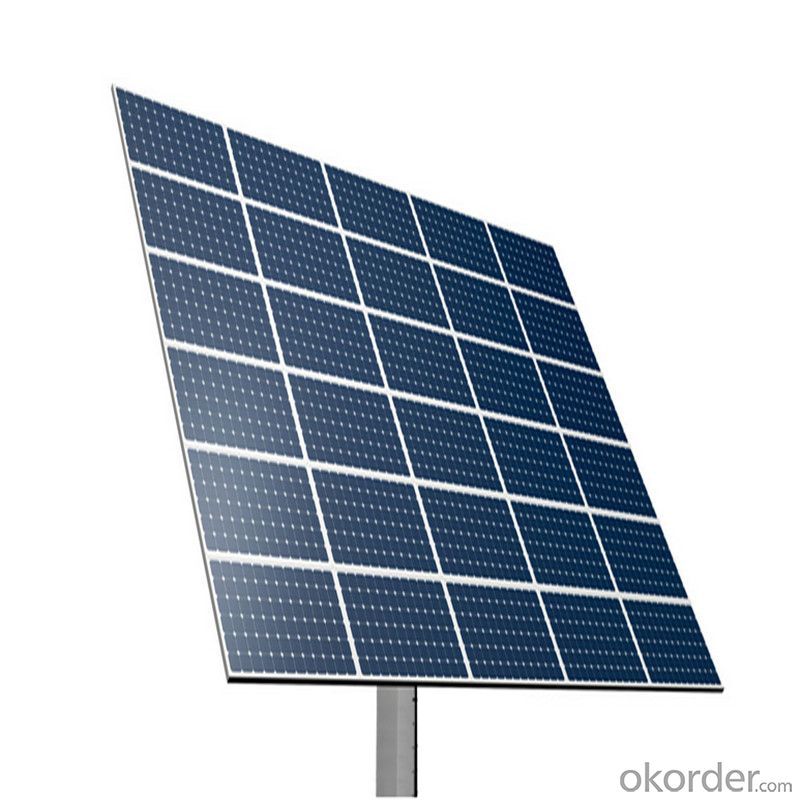
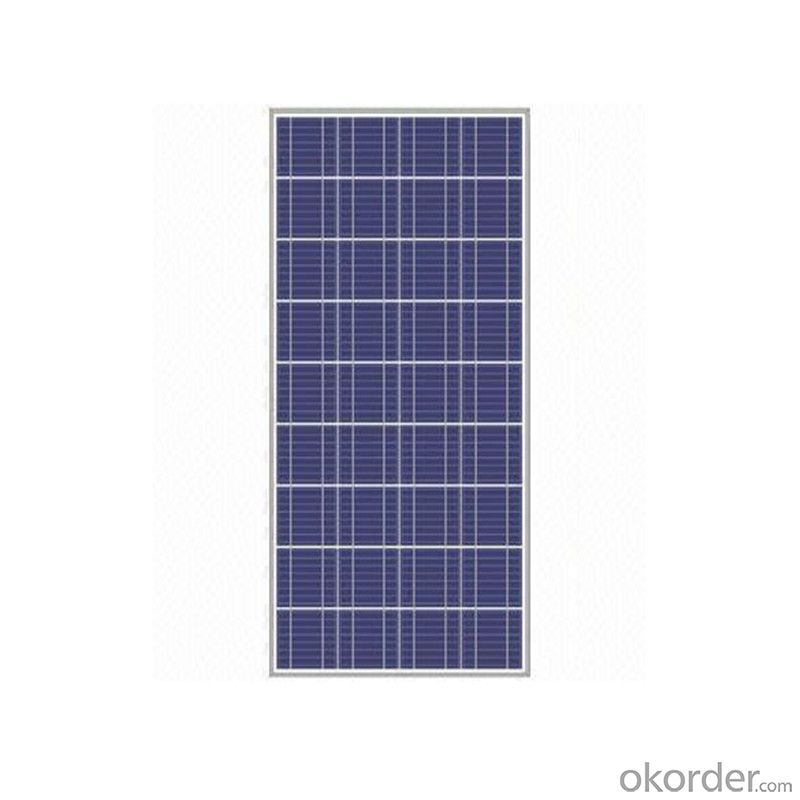
Specification
Model | SIM-100 |
Maximum Power at ST(Pmax)W | 100Wp |
Maximum Power Voltage(Vmp)V | 18.0V |
Maximum Power Current(Imp)A | 5.56A |
Open Circuit Voltage(Voc)V | 22.0V |
Short Circuit Current(Isc)A | 5.9A |
Cell Efficiency(%) | 17.0% |
Module Efficiency(%) | 15.37% |
Operating Temperature°C | -40°C to 85°C |
Maximum system voltage | 1000V(IEC)DC |
Power tolerance | -0.03 |
Temperature coefficients of Pmax | -0.45%/°C |
Temperature coefficients of Voc | -0.27%/°C |
Temperature coefficients of Isc | 0.05%/°C |
Weight(kg) | 7.4 |
Number of cell(pcs) | 4*9 |
FAQ
We have organized several common questions for our clients,may help you sincerely:
1). What’s price per watt?
A: It’s depends on the quantity, delivery date and payment terms of the order. We can talk further about the detail price issue. Our products is high quality with lower price level.
2). Can you tell me the parameter of your solar panels?
We have different series of cells with different power output, both from c-si to a-si. Please take our specification sheet for your reference.
3). How do you pack your products?
We have rich experience on how to pack the panels to make sure the safety on shipment when it arrives at the destination.
4). How long can we receive the product after purchase?
In the purchase of product within three working days, We will arrange the factory delivery as soon as possible. The perfect time of receiving is related to the state and position of customers. Commonly 7 to 10 working days can be served.
The basic principles of Cheap Photovoltaic Cells
Composition of the solar photovoltaic power generation system
Solar photovoltaic power generation system consists of solar photovoltaic batteries, photovoltaic system battery controller, and battery and AC-DC inverter is its main components. The core element is a set of photovoltaic cells and a controller.
Enhance the efficiency of the Cheap Photovoltaic Cells has been on increasing the efficiency of solar cells and efficient operation and maintenance to achieve. That is reasonably light and temperature conditions, the efficiency of the system components up to standards of efficiency, which is 100%. For long-term efficient operation, we rely on sound engineering design, quality of construction materials and construction process specifications, as well as timely maintenance cleaning.
PV system design, optimal control, integrated; combining a variety of scenarios is the future trend of the PV market.
And about the system, from the future development of the PV market, he has a great imagination.
PV market in the future, the market requirements are as follows:
1. Conventional roof outside the building integrated forms - not just the pursuit of aesthetic BIPV, functional (as building components), integration (for easy installation, construction and because the rational design); construction materials for photovoltaic systems as one, through the relevant . building standards, 2 as one of the architects considerations, there are many way to go;
Combined photovoltaic and other industries, and agricultural PV: photovoltaic greenhouses and require light, light structure, low cost; combined photovoltaic and transportation, water and the like;
3. Solar PV and other mobile car, requiring efficient use of charge-discharge control requirements higher;
4. Smart Grid and related PV systems, micro-grid system design. This project combines and other energy concepts of the future Internet will be of great demand.
- Q: Can solar cells be used to power an entire household?
- Yes, solar cells can be used to power an entire household, depending on the size of the solar panel system and the energy needs of the household. A properly designed and adequately sized solar power system can generate enough electricity to meet the daily energy requirements of a household, providing clean and renewable energy.
- Q: Can solar cells be used to power communication systems?
- Yes, solar cells can be used to power communication systems. Solar cells convert sunlight into electricity, which can be used to power various devices, including communication systems. This is especially useful in remote areas or during emergencies where access to traditional power sources may be limited. Additionally, solar-powered communication systems are environmentally friendly and sustainable.
- Q: What is the cost of producing a solar cell?
- The cost of producing a solar cell can vary depending on various factors such as the type and quality of materials used, manufacturing processes, scale of production, and market conditions. However, advancements in technology and economies of scale have significantly reduced the cost of solar cell production over the years. On average, the cost of producing a solar cell can range from a few cents to a few dollars per watt.
- Q: What is the role of solar cell inverters in grid-tied systems?
- The role of solar cell inverters in grid-tied systems is to convert the direct current (DC) electricity generated by the solar panels into alternating current (AC) electricity that can be used by the electrical grid. Additionally, they ensure that the solar system operates safely and efficiently by monitoring the grid voltage and frequency, synchronizing with the grid, and providing protection against power fluctuations or interruptions.
- Q: What are the advantages of monocrystalline silicon and polycrystalline silicon in solar power?
- and the production process of polysilicon can be achieved by casting method and direct solidification method. Grain size of the grain size of centimeters; [4] due to nearly a decade of monocrystalline silicon technology research and development soon, in which the process is also used in the production of polycrystalline silicon cells, such as the choice of corrosion emission junction, back surface field, , Surface and body passivation, fine metal gate electrode, the use of screen printing technology can reduce the width of the gate electrode to 50 microns, the height of 15 microns or more, rapid thermal annealing technology for polysilicon production can greatly shorten the process time,
- Q: Silicon solar cell power generation principle
- When the junction of two different materials formed by the light irradiation, the process of generating electromotive force.The process of the first material absorbs the energy of the photon, resulting in equal number of positive and negative charge, then these charges were migrated to both sides of the knot, The formation of even electricity layer. Although the effect is not generated instantaneous, but the response time is quite short.
- Q: How do solar cells affect the value of a property?
- Solar cells can significantly increase the value of a property due to their ability to generate clean and renewable energy. The presence of solar panels can enhance the property's appeal, lower energy costs, and potentially provide a source of income through net metering or selling excess energy back to the grid.
- Q: Is A grade better than the B grade when we buy the poly solar cells.
- The quality of the poly solar cell is differentiated by grade, therefore, A grade is better than B grade.
- Q: What is the role of tracking systems in solar cell installations?
- The role of tracking systems in solar cell installations is to optimize the efficiency and output of the solar panels by automatically adjusting their position and orientation throughout the day to maximize exposure to sunlight. This ensures that the panels are always facing the sun at the optimal angle, resulting in increased energy production and improved overall performance of the solar cell installation.
- Q: What are the safety considerations when installing solar cells?
- Some safety considerations when installing solar cells include proper handling and installation of the panels to avoid any physical injuries, ensuring the electrical connections are secure and properly insulated to prevent electric shocks or fires, and following necessary protocols and guidelines to protect against potential hazards such as falls from heights or exposure to harmful chemicals. Additionally, it is important to have a qualified professional install the solar cells to ensure compliance with local building codes and safety standards.
Send your message to us
Junction Solar Cells 200 Watt Photovoltaic Poly Solar Panel with ISO9001/14001/CE/TUV/UL
- Loading Port:
- China main port
- Payment Terms:
- TT or LC
- Min Order Qty:
- 1000 watt
- Supply Capability:
- 500000 watt/month
OKorder Service Pledge
OKorder Financial Service
Similar products
Hot products
Hot Searches
Related keywords
